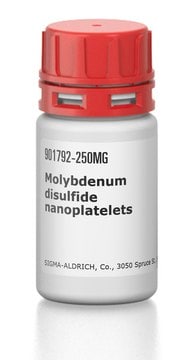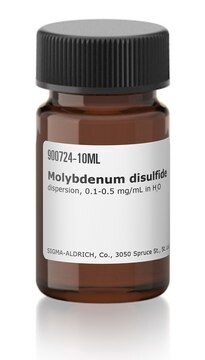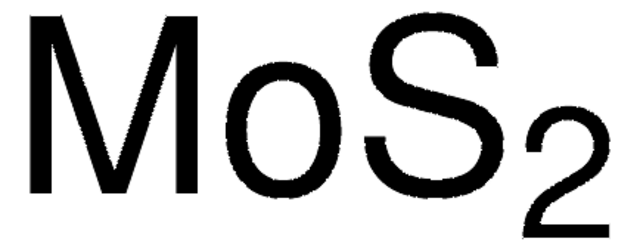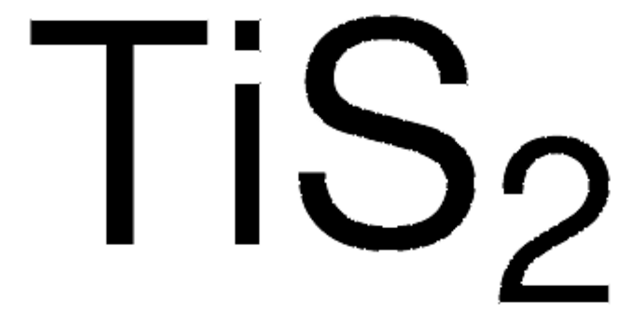234842
Molybdenum(IV) sulfide
powder, <2 μm, 98%
Synonyme(s) :
Molybdenum disulfide
About This Item
Produits recommandés
Niveau de qualité
Pureté
98%
Forme
powder
Caractéristiques du produit alternatif plus écologique
Design for Energy Efficiency
Learn more about the Principles of Green Chemistry.
sustainability
Greener Alternative Product
Taille des particules
<2 μm
Densité
5.06 g/mL at 25 °C (lit.)
Application(s)
battery manufacturing
Autre catégorie plus écologique
, Enabling
Chaîne SMILES
S=[Mo]=S
InChI
1S/Mo.2S
Clé InChI
CWQXQMHSOZUFJS-UHFFFAOYSA-N
Vous recherchez des produits similaires ? Visite Guide de comparaison des produits
Description générale
Application
Conditionnement
Code de la classe de stockage
13 - Non Combustible Solids
Classe de danger pour l'eau (WGK)
nwg
Point d'éclair (°F)
Not applicable
Point d'éclair (°C)
Not applicable
Équipement de protection individuelle
Eyeshields, Gloves, type N95 (US)
Faites votre choix parmi les versions les plus récentes :
Déjà en possession de ce produit ?
Retrouvez la documentation relative aux produits que vous avez récemment achetés dans la Bibliothèque de documents.
Les clients ont également consulté
Articles
Developed in the last several years, fluorescence quenching microscopy (FQM) has enabled rapid, inexpensive, and high-fidelity visualization of two-dimensional (2D) materials such as graphene-based sheets and MoS2.
An article concerning self-propagating reactions induced by mechanical alloying, presented by Sigma-Aldrich.com.
Nanostructured Materials Through Ultrasonic Spray Pyrolysis
The production of hydrogen by catalytic water splitting is important for a wide range of industries including renewable energy petroleum refining and for the production of methanol and ammonia in the chemical industry.
Notre équipe de scientifiques dispose d'une expérience dans tous les secteurs de la recherche, notamment en sciences de la vie, science des matériaux, synthèse chimique, chromatographie, analyse et dans de nombreux autres domaines..
Contacter notre Service technique









